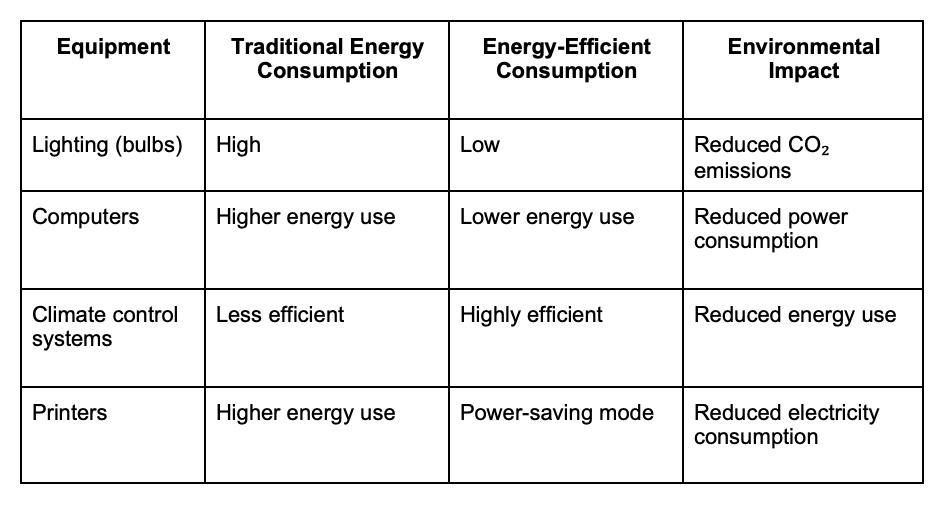In today's world, sustainability is becoming increasingly relevant, and businesses of all sizes are looking for ways to reduce their impact on the environment. Transforming a traditional office into an eco-friendly workspace is one of the key steps in this direction. Such a transition not only helps preserve nature but can also improve work efficiency and enhance a company’s corporate image. In this article, we will explore the main recommendations for creating a sustainable office space, focusing on waste sorting, using energy-efficient equipment, and greening the office.
Waste Sorting: The First Step to a Green Office
Implementing a waste sorting system is one of the simplest and most effective ways to make an office more eco-friendly. This not only reduces the amount of waste sent to landfills but also promotes recycling, decreasing the need for new resources. To effectively organize waste sorting, it is advisable to place separate bins for different types of waste, such as paper, plastic, glass, and organic materials, in convenient office locations.
Key Steps for Implementing Waste Sorting:
- Installing Bins: Place dedicated bins for different types of waste in strategic areas of the office, such as kitchens, hallways, and workspaces.
- Employee Training: Conduct training sessions or informational meetings to explain the importance of waste sorting and how to do it correctly.
- Collaboration with Recycling Companies: Partner with local recycling companies to ensure proper waste processing and disposal.
Additionally, regular monitoring and assessment of the waste sorting system’s effectiveness can help identify areas for improvement and ensure compliance with established guidelines.
Energy-Efficient Equipment: Saving Resources and Costs
Using energy-efficient equipment is a crucial aspect of creating a sustainable office. It not only reduces electricity costs but also helps lower the company’s carbon footprint. Switching to LED lighting, which consumes less energy and has a longer lifespan compared to traditional bulbs, is one of the first steps in this direction.
Comparison of Traditional vs. Energy-Efficient Equipment:

In addition to switching to LED lighting, investing in energy-efficient computers and office equipment with energy-saving certifications like Energy Star is recommended. Installing automatic shut-off systems for unused equipment can prevent unnecessary energy consumption and enhance the office's overall energy efficiency.
Office Greening: A Natural Balance in the Workspace
Greening the office is not just an aesthetic choice but also an essential element for creating a healthy and productive work environment. Green plants improve air quality, reduce stress levels, and enhance employees’ overall well-being. Adding indoor plants to workspaces can help filter harmful substances from the air.
Ideas for Office Greening:
- Indoor Plants: Choose plants that thrive indoors, such as ficus, snake plants, or peace lilies.
- Green Walls: Install vertical gardens that take up little space while giving the office a modern look.
- Natural Materials: Use furniture and decor made from natural materials such as wood or bamboo to complement the overall eco-friendly concept.
Moreover, office greening helps reduce noise pollution and creates a more comfortable microclimate, positively impacting work productivity.
Additional Steps Toward a Sustainable Office
Besides the primary recommendations, there are other ways to make an office more sustainable. One such method is replacing paper documents with digital files, significantly reducing paper consumption and making information storage more efficient. Digital documents are easier to search for and organize, improving workflow efficiency.
Other Additional Steps Include:
- Providing Bicycle Parking: Encourage employees to use eco-friendly transportation by offering safe and convenient bicycle parking spaces.
- Using Eco-Friendly Materials: Choose office supplies with minimal environmental impact, such as recycled paper or biodegradable plastics.
- Installing Rainwater Collection Systems: Use collected rainwater for office needs like watering plants or cleaning, helping conserve water resources and reduce costs.
These additional measures will help create a comprehensive approach to corporate environmental responsibility and make your office even more sustainable.
Using Renewable Energy Sources
An important aspect of creating an eco-friendly office is integrating renewable energy sources. Installing solar panels or using wind energy can significantly reduce the office’s reliance on traditional energy sources and lower the company’s carbon footprint. Investing in renewable energy not only benefits the environment but can also provide financial advantages in the long run by reducing electricity costs.
Additionally, companies can consider purchasing green energy from suppliers specializing in renewable sources. This allows offices not only to reduce their environmental impact but also to support the development of clean energy technologies. Implementing such solutions demonstrates corporate environmental responsibility and can positively influence the company’s reputation among clients and partners.
Creating an Eco-Friendly Culture in the Workplace
Effectively implementing eco-friendly practices in the office is impossible without the support and involvement of all employees. Establishing an eco-friendly culture includes not only educating and informing staff about the importance of sustainability but also encouraging active participation in green initiatives. This can include organizing community events such as tree planting, participating in environmental campaigns, or holding contests for the best eco-friendly office improvement ideas.
Moreover, it is essential to create conditions where sustainable practices become a natural part of daily work. For example, promoting public transportation or cycling, allowing remote work to reduce daily commuting, and supporting initiatives to cut resource consumption, such as water and electricity savings.
Fostering an eco-friendly culture not only helps achieve sustainability goals but also boosts employee motivation and satisfaction, creating a more cohesive and responsible team.
Water Resource Management
Effective water management is another crucial aspect of a green office. Installing water-saving devices, such as low-flow faucets, showers, and toilets, can significantly reduce water consumption in the workplace. Additionally, implementing rainwater collection and reuse systems allows offices to use collected water for plant irrigation or cleaning, helping conserve water resources and reduce utility costs.
Regular monitoring of water usage and identifying potential leaks or inefficient processes can further optimize consumption. Smart water management systems enable precise tracking of water use and the implementation of necessary conservation measures.
Reducing water consumption not only preserves natural resources but also enhances a company's environmental image, demonstrating its commitment to sustainability.
Conclusion
Creating a green office is an essential step for businesses looking to reduce their environmental impact and contribute to the planet's sustainable development. By implementing eco-friendly practices such as waste sorting, using energy-efficient equipment, office greening, integrating renewable energy sources, fostering an eco-conscious workplace culture, and managing water resources efficiently, companies can not only lower costs but also enhance work efficiency and improve their corporate image.
Furthermore, an eco-friendly office attracts environmentally conscious clients and employees, providing an additional advantage in a competitive market. Start small: introduce waste sorting, switch to energy-efficient equipment, green your office, integrate renewable energy sources, cultivate an eco-friendly workplace culture, and manage water resources efficiently today, and your workspace will become a model of sustainability for others.
